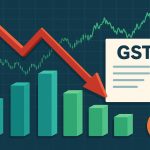Table of Contents
- Digital Transformation in Art Auctions
- The Rise of NFTs and Digital Art
- Changing Collector Demographics
- Sustainability and Ethical Considerations
- Shift Towards Private Sales
- Impact of Economic Factors
- Emergence of New Artistic Mediums
- Final Thoughts
Art auctions play an undeniable role in shaping the trajectory of art collecting, acting as both a reflective mirror of market preferences and a driving force behind shifts in collector behavior. As the art world embraces rapid global and technological changes, the influence of auctions intensifies, providing insightful signals about what collectors value. For those who wish to navigate these evolving trends, understanding the dynamics of auctions—and how they set new benchmarks—can be essential. Whether you’re a seasoned buyer or a newcomer, seeking fine art professional appraisals before participating in auctions can offer essential insights that inform smarter collecting decisions.
The digital transformation of auction houses, the emergence of new media, and shifting collector priorities have all contributed to the constantly evolving landscape. As collectors look for transparency, efficiency, and relevance, these changes influence what gets collected, who becomes a collector, and which artists and movements thrive.
Digital Transformation in Art Auctions
In recent years, digital transformation has redefined the auction landscape. Leading auction houses now host online events, allowing collectors from every continent to bid in real-time without location constraints. This accessibility has brought a fresh influx of global interest, pushing auction markets beyond regional limits and introducing the industry to a diverse, tech-savvy audience.
Hybrid formats have also emerged, blending live and virtual experiences to maximize participation. These changes are broadening the market and encouraging innovation among auctioneers, who now use sophisticated online platforms and AI-powered recommendations to connect with collectors.
The Rise of NFTs and Digital Art
The meteoric rise of NFTs (Non-Fungible Tokens) has sent shockwaves through the art auction world. By enabling the sale and transfer of digital items with proven authenticity via blockchain, NFTs have expanded the definition of collectible art. Major auction houses now dedicate entire sales to NFTs and digital art, drawing in new collectors interested in emerging artists and investments beyond traditional media.
Because proof of ownership is cryptographically secure and visible to all, NFTs address historical art market issues around provenance and forgery. As prominent sales like Beeple’s record-breaking auction have demonstrated, digital art and NFTs are establishing lasting trends that continue to attract attention from investors and collectors worldwide (BBC: Beeple NFT Art Auction).
Changing Collector Demographics
The face of the art collector is changing. Millennials and Generation Z are entering the market with different values and tastes than previous generations. They’re more likely to collect contemporary and digital art, value socially engaged works, and interact with the market through online platforms and social media. Auction houses are taking notice and adjusting the works they offer and the artists they promote to reflect these shifting preferences.
Today’s Collectors are driven by different priorities. They often look for culturally significant works, support diversity, and show interest in artists from underrepresented backgrounds. This taste evolution influences which artists and movements are spotlighted in major auctions.
Sustainability and Ethical Considerations
Environmental and ethical concerns have taken center stage in fine art collecting. Modern collectors increasingly seek works that employ eco-friendly materials or promote social justice. Provenance, transparency, and responsible sourcing are now key factors for many buyers. Auction houses have responded by spotlighting artists who address sustainability or work with reclaimed materials while increasing the transparency of their sales processes and the histories of their works.
This greater scrutiny helps foster trust in the market, giving established and new collectors confidence. For SEO.
Shift Towards Private Sales
In parallel with the rise of public online auctions, there is a growing demand for private sales. Discretion, speed, and tailored negotiations drive collectors and investors to opt for private transactions instead of traditional public bidding. As a result, the volume of private sales is rising steadily, even as the spotlight remains on high-profile auction events. This shift points to a more selective and strategic approach to art acquisition among serious collectors.
Impact of Economic Factors
Globally, economic forces like inflation, fluctuating currency values, and geopolitical instability are influencing how collectors spend and what they seek. In periods of uncertainty, there is a heightened focus on works by blue-chip artists and established names. Rare and historically significant works are considered safer investments, while collectors may hesitate to take risks on emerging artists or avant-garde pieces. The selective buying patterns seen at recent auctions reflect this caution, emphasizing the importance of appraisals and expert advice in decision-making.
Emergence of New Artistic Mediums
Auctions are increasingly featuring works that stretch the boundaries of traditional media. From artificial intelligence-generated paintings to immersive installations using VR, new forms are gaining traction among adventurous collectors. These contemporary mediums redefine what “fine art” can entail and attract buyers excited by the convergence of art and technology.
This appetite for innovation signals a vibrant period of experimentation, as auction houses curate sales featuring everything from kinetic sculptures to mixed reality experiences, meeting the interests of progressive collectors and challenging established norms.
Final Thoughts
Art auctions remain a powerful force in defining present and future collecting trends. As digital tools expand access, NFTs open new realms, demographics shift, and ethical standards rise, auctions respond by adapting their offerings and processes. Collectors who follow these auctions gain critical insight into where the art world is headed and how best to participate, whether for passion, investment, or legacy.
Lynn Martelli is an editor at Readability. She received her MFA in Creative Writing from Antioch University and has worked as an editor for over 10 years. Lynn has edited a wide variety of books, including fiction, non-fiction, memoirs, and more. In her free time, Lynn enjoys reading, writing, and spending time with her family and friends.















